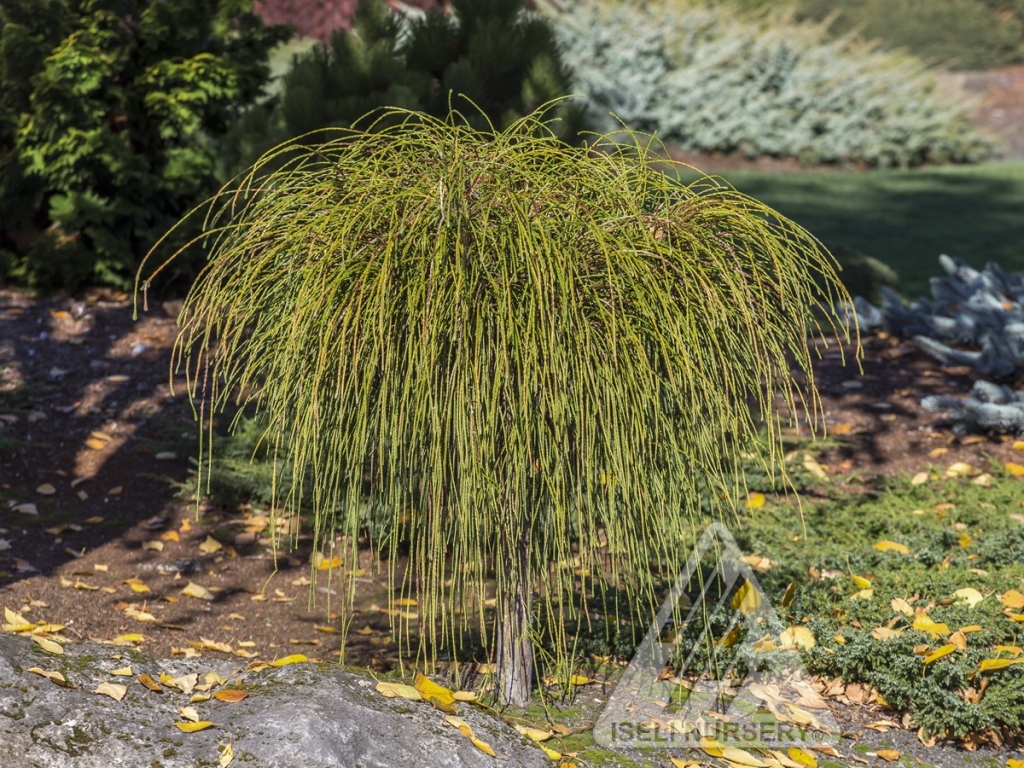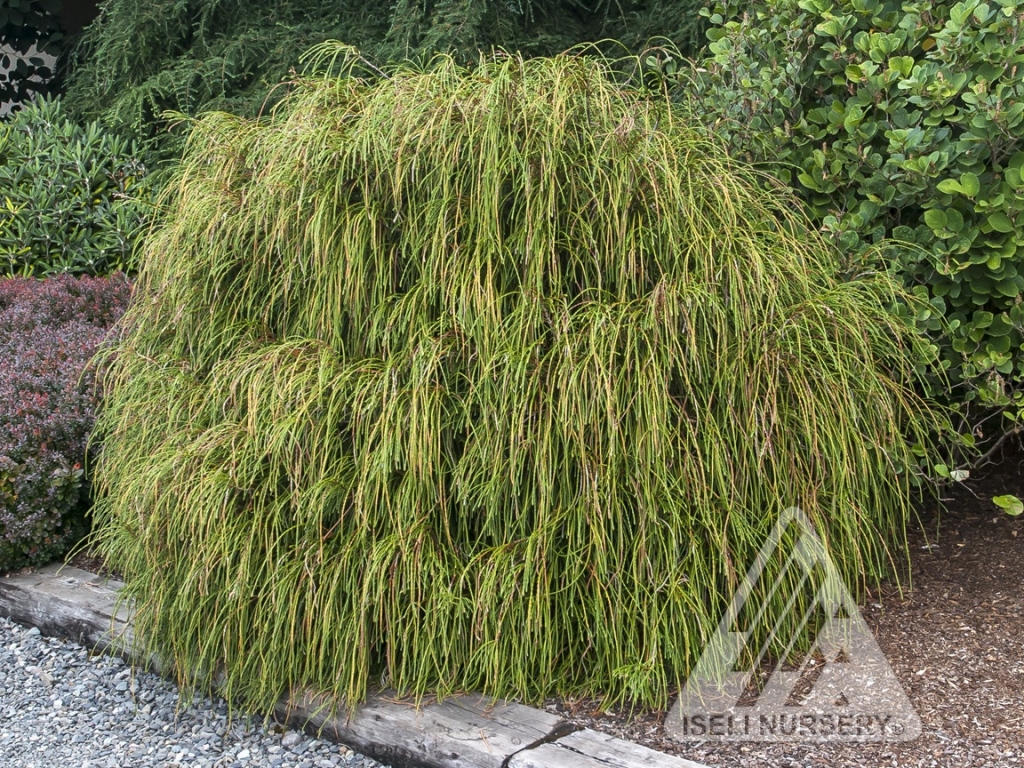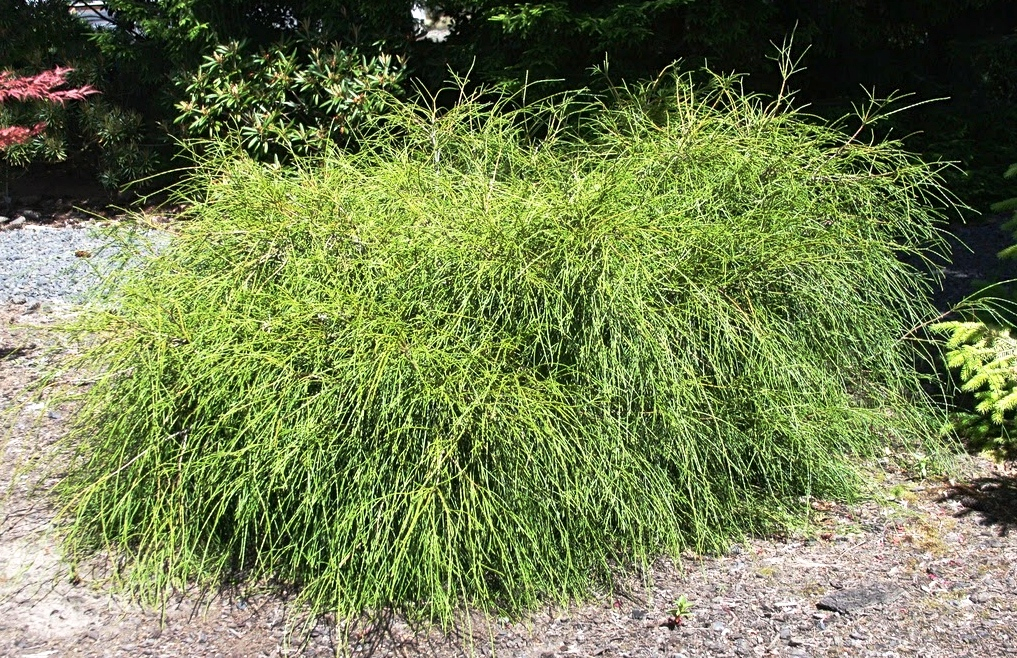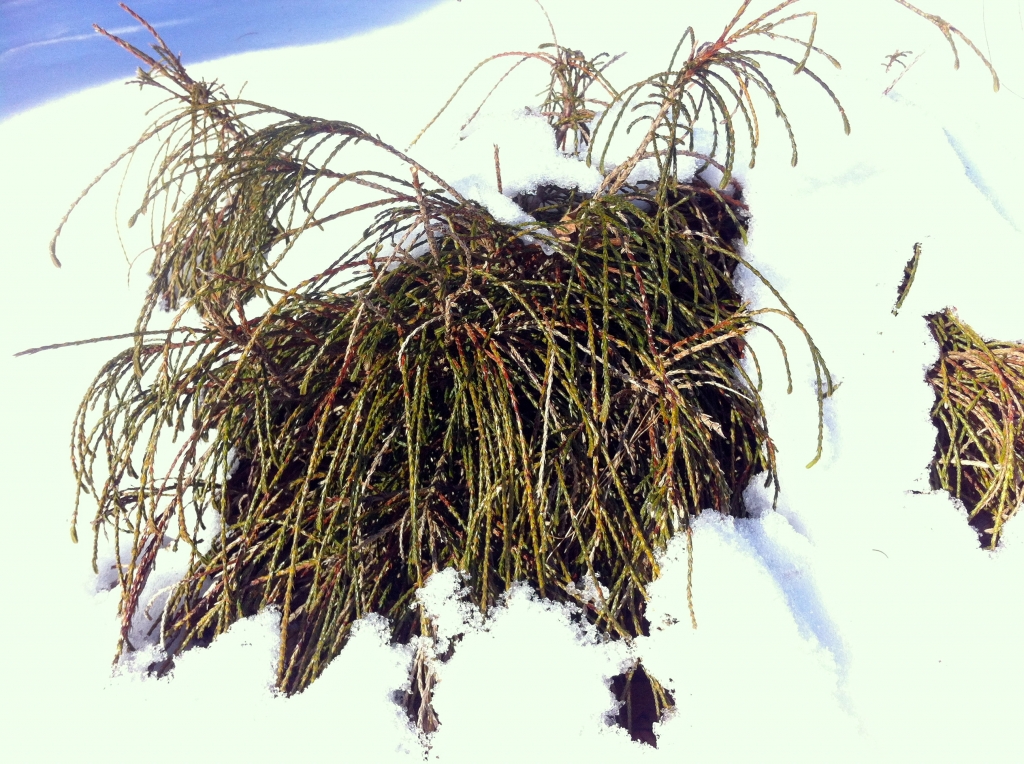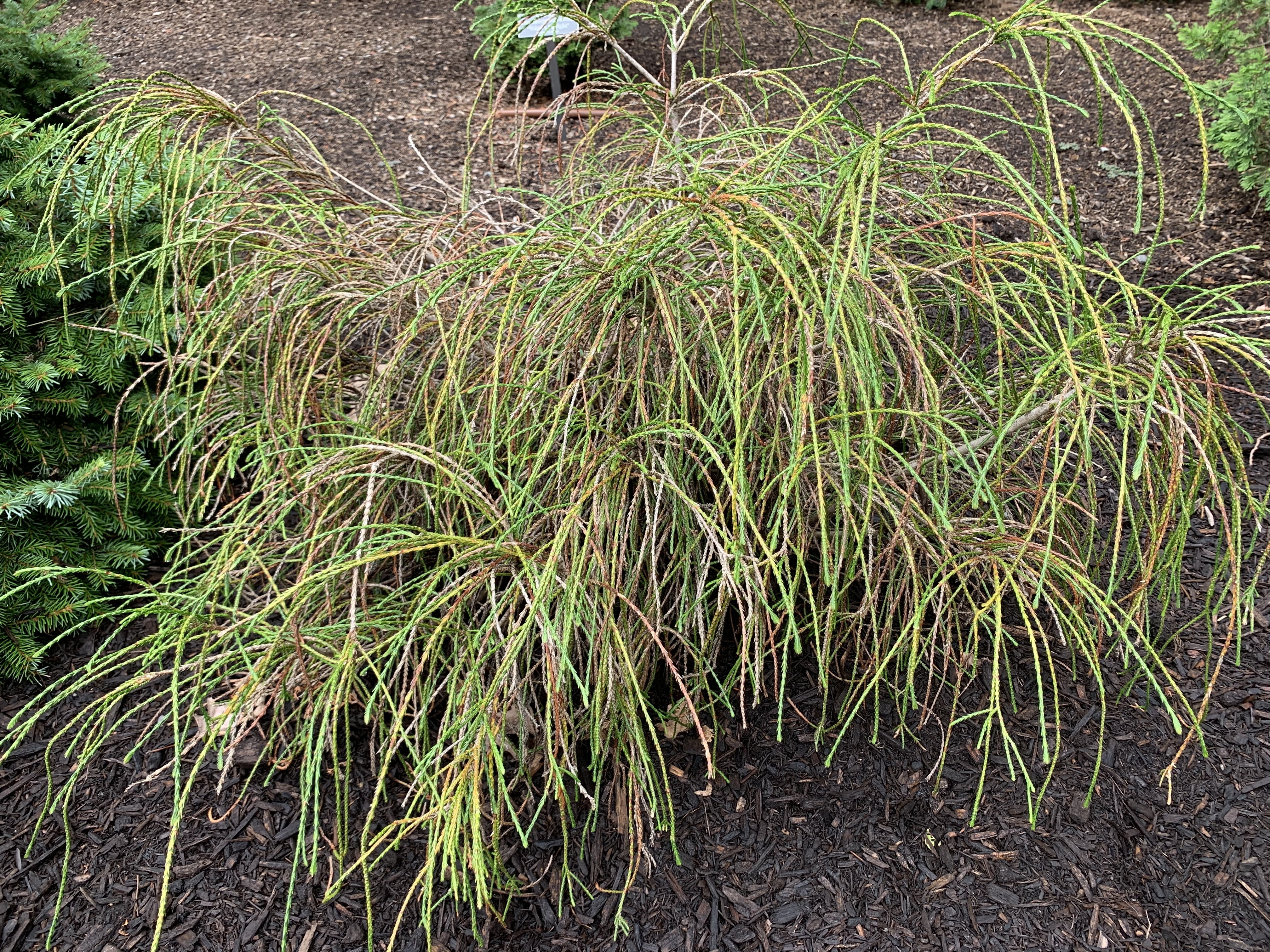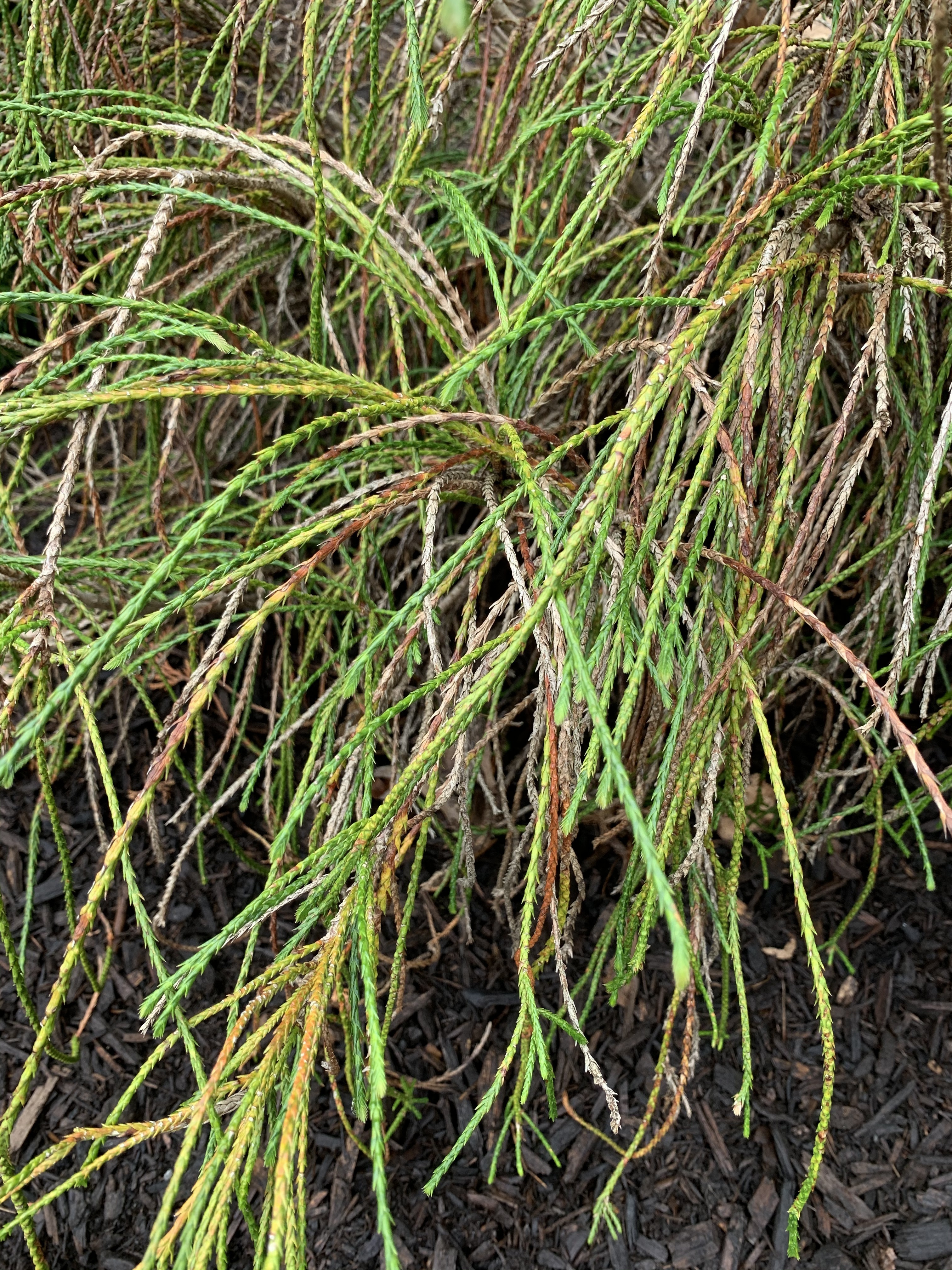Thuja plicata 'Whipcord' is a shrubby, slow-growing, dwarf form of western red-cedar that grows with pendulous whipcord-like green foliage which droops from branchlets rising upward, fountain-like, from the center before arching downward.
This small shrub typically grows as a flattened mound when young, growing to 2 feet (60 cm) tall and to 3 feet (90 cm) wide over its first 10 years in the landscape. Eventually it will form a more rounded shrub up to 4 to 5 feet (1.3 - 1.6 m) tall and as wide. Its glossy green foliage usually acquires bronze tones in winter in colder climates.
It is best grown in moist, fertile, well-drained soils in full sun to part shade, thriving in cool summer climates. 'Whipcord' is generally intolerant of dry conditions. Although it performs best in full sun, plants generally appreciate some light afternoon shade in hot summer climates that have different warm season temperatures and soil conditions than the specie's native habitat of the Pacific-northwest of the United States.
This cultivar originated as a seedling found in 1986 by Barbara Hupp of Drakes Crossing Nurseries, Silverton, Oregon, an understock supplier to Iseli Nurseries of Boring, Oregon. After years of testing, Iseli introduced the cultivar to the trade in 1999. Since its introduction, tens of thousands of Whipcord cultivars have made their way into North American gardens in no small measure because of its unusual growth habit. Many people don't think they are purchasing a conifer but an ornamental grass!
